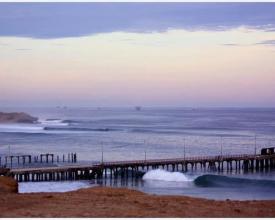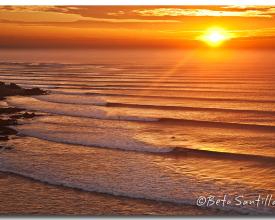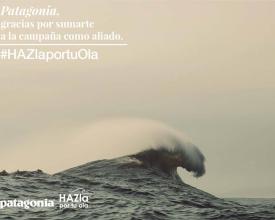
Legally protecting spectacular surf breaks: a tool for contributing to coastal ecosystems management
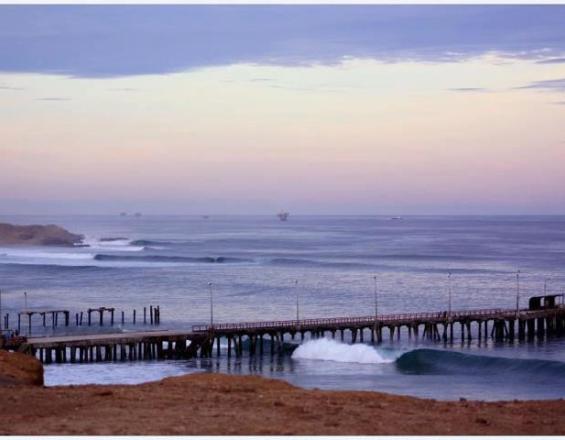
The solution targets protection of iconic surf breaks in Peru. In absence of national, spatial coastal-marine planning strategies in a country rich in marine resources and beautiful coastal sceneries, SPDA´s initiative to protect surf breaks has stimulated positive responses from users: surfers, visitors, local fishing communities, tourist operators and sporting and local authorities. SPDA´s Act for Your Wave Initiave, is always received positively and receives media attention and citizen support and is the enabling platform for the solution.
Context
Challenges addressed
There is a saying in Peru: "coastal citizens live with their backs to the sea". The solution proposed seeks to generate awareness about the social, ecological and economic importance of surf breaks. Peru host some of the world´s most reknown surf breaks, but for years authorities, and the general public have thought of these as simple "geographical accidents" used by "a few". There has been a tendency to overlook and dismiss their widespread social, ecological and economic importance. Bringing these surf breaks into the political agenda and social spotlight has a multiplyer effect which involves engagement of actors, involvement by national and local communities, and a better enabling environment to promote surf breaks and their surroundings as places for leisure, sports, tourism, and certainly supporting local livelihoods of fishing communities.
Location
Process
Summary of the process
Key awareness raising and analysis of specific circumstances are key to ensure the objective and goal of protecting a specific surf break, is accompanied by an enabling environment (institutional, people, resources, media support) which is supportive of the idea and actions; this in turn builds (and almost devlops in parallel) upon forging strong relations and alliances to ensure long term sustainability; but things don´t move on their own - there is the need for strong leadership and technical and policy guidance which is able to mobilize the support and enthusiasm generated; this is complemented with close work with key authorities (FENTA, DICAPI) who are responsible for implementing the law and regulation for the protection of surf breaks; finally, and possibly the most challenging phase is monitoring and ensuring protection measures are effective in the long term, as circumstances, investment opportunties, and external pressures appear. There is almost a step by step process on which these building blocs rely to become effective in themselves as a complete package or solution.
Building Blocks
Participatory awareness raising and analysis
Legitimizing the formal recognition and protection of a surf break is key to ensuring sustainability and maintainance of the site over the long term. Meetings to explain the advantages of protecting the surf break and its multiplicatory effect, enables direct actors at the local level in particular to commit to the idea and be the direct agents of change and local protection. Likewise, involving local authorities facilitates broad consensus towards a common goal shared by all participants. This is achieved through local workshops and incidence activities.
Enabling factors
1. Good alliances and reliable partnerships with key actors.
2. Good communication skills.
3. Detailed understanding of advantages and potential challenges to be met by actors.
Lesson learned
1. It is not always easy to find a common goal among all actors or stakeholders with an interest in the surf breaks and their surrounding areas of influence.
2. Though the surf break is per se the central object of protection, it is important to highlight and ensure people understand that the overall effort goes beyond the surf break. We are trying to protect interests related to small scale fisheries; tourism; marine environments; and sustainable development opportunities.
3. Organizing local meetings with key actors is not always easy given their daily working agendas. To overcome this, it is key to adapt to these dynamic agendas and respond accodingly.
Building a strong base of actors (surfers, tourist operators, others) to engage in campaigns and actions
The protection of iconic surf breaks needs to have a strong advocay group/base to support a wide range of actions both at the national and local level to secure the protection of the break. These actions include: participating in campaigns, networking and identifying potential technical cooperation, identifying key persons which can offer pro bono support, assisting in developing technical files describing the surf breaks and their characteristics, etc.
Enabling factors
1. Strong networking capacities.
2. Confidence by the group in the actions and leadership of SPDA.
3. Experience in leading campaigns.
Lesson learned
There is an important core group of actors and a base on which SPDA and the Do it for Your Wave Initiative can rely on to strengthen the surf breaks protection system. SPDA has built this relation over time and a long process of engagement and interaction.
Resources
Exercising leadership in registering surf breaks in the official national register
SPDA has led the registration of over 10 surf breaks which are now formally protected. This leadership is key because there is need for dynamic, strong and visible actions which can be informed to the key actors/base of stakeholders who support the idea of protecting surf breaks and their surroundings. Leadership in this context involves not only "action" per se but internal legal capacityto navigate the amnlistrative procedures and requirements to lead to the recognition of a particular surf break as subject of protection. This leadership includes: systematizing relevant documents (p.e. maps, analysis of social context, environmental and ecologic descrition of the area, map of actors, etc.), presenting them to the relevant authority (DICAPI - the Direction of Ports and Marine Officials), following and monitoring process and presenting complementary documentation, undertaking press conferences, leading media campaigns, etc.
Enabling factors
1. A legal and regulatory basis which enables the registration of surf breaks (Law 27280, Supreme Decree 015-2013-DE).
2. Strong legal capacities (specilized in environmental and administrative law).
3. A team of committed proffessionals, which includes not only legal expertise but other discilplines (e.g. marine biologists, sociologists).
Lesson learned
Procedures to register a surf break with DICAPI can be lengthy and complex. SPDA has developed a know how which has enabled it to start registering over 10 surf breaks since 2014. This has been possible due to a enthusiastic and motivated team which is convinced about the long terms impacts about the mission pursued. Maintaining a team which is also "related" to the sea and ocean (there is surfers, divers, windsurfers) provides with a strong committment by its members.
Working in partnership with key champions in the public sector
To achieve an effective protection of surf breaks, SPDA has built a very strong relationship with DICAPI and, in particular, with the National Surfing Federation (FENTA) with whom all actions are coordinated and campaigns discussed. Having a good relationship with with DICAPI as the competent authority in registering the surf breaks is not a guarantee for success, but does facilitate actions taken as DICAPI realizes SPDA is a serious organization and is supported by a group of committed actors. The relationship with FENTA is also very positive because FENTA is the key national institution which promotes surf and related sports.
Enabling factors
1. Leadership and seriousness - on behalf of institutions leading protection initiative.
2. Good relationships with public institutions which are key in promoting and managing the surf breaks protection regime/system.
Lesson learned
Legal and administrative procedures are not mathematical: they imply levels of interpretation, discussion, and interaction with authorities and officials of DICAPI, FENTA and even the protected areas authority to discuss how the system for the protection of surf breaks might interact with the protected areas regime.
Monitoring and being vigilant and active in implementation
Though ensuring the registration of a surf break is no easy task, it is critical to ensure thata once a surf break is recognized and registered, actions are taken to ensure that the promises and advantages of protection are delivered to all actors, and local fishing communities in particular. This building bloc implies, for example: regular capacity building and interaction with children and youngsters; cleaning of beaches campaigns; recognition of local champions and leaders; monitoring development initiatives (e.g. in infraestructure which may affect a surf break), regular mettings with local actors to explore ways in which the local environment an be improved, etc.
Enabling factors
1. Good relations with local communities and all involved actors.
2. Available resources to undertake montoring and vigilance activities and actions.
3. Permanent travel and visits by Do it for Your Wave to each registered surk break.
4. Good communications and networking activities.
Lesson learned
This particular building bloc is key in the step by step process suggested. Actual formal protection is almost a FIRST step in a more long term effort to ensure integrity of surf breaks and their surroundings. Resources need to undertake a close monitoring of what is happening oin each site, regularly. Things may change rapidly, including if agreements have been set to ensure for example, that no infraestructure affects these sites (negatively). This has proved to be a key challenge as expectations by all actors are often high. Protecting the surf break should enable a tangible benefit to all. This needs to be documented carefully and disseminated to ensure all actors are aware about the positive change taking place.
Impacts
1. Demonstrates the possibilities of positive alliances between users (surfers), visitors, local fishing communities, photographers, tourist operators and sporting and local authorities.
2. Enables the effective protection of biodiversity rich marine and coastal ecosystems, key dimensions in local livelihoods.
3. Ensures positive and active involvement and participation of local fishing communities, tourist related stakeholders, and a wide range of users (e.g. surfers, photographers and simple beach goers!)
4. Opens up very real possibilities of upscaling experience in other countries - initial interest has been expressed by actors in Brazil, Chile, Costa Rica.
5. Promotes engagement of young people in activities related to protection campaigns (e.g. media campaigns, cleaning of beaches initiatives, celebrations in free concerts, promotion activities, etc.).
6. Obligues the national protected areas authority to take into account and consider the importance of surf breaks as a potential conservation and management tool.
7. Enables engagement of Do it for Your Wave (an ongoing initiative by SPDA) in international initiatives sponsored by IUCN, Save the Waves Initiative and others.
Beneficiaries
Local fishing communities; tourism operators and promoters; marine sports aficionados; surfers (the population of surfers has grown from a few thousands in the early 1980´s to over 100,000 at present); national and local authorities.
Sustainable Development Goals
Story
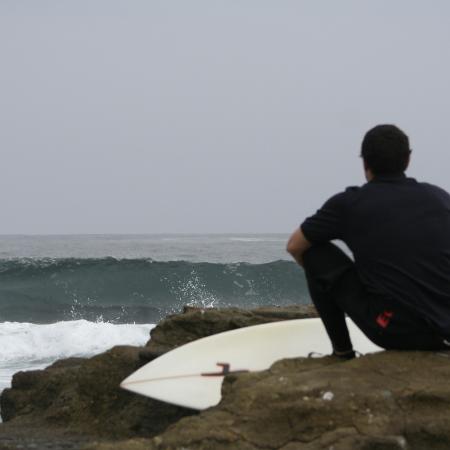
Surf breaks have become over the years a point of convergence of a wide range of people and institutions - surfers, fishermen, local communities, competent institutions, developers, etc - often with competing interests. At the same time, Peru is widely acknowledged -together with Hawaii- as the birthplace of surfing. Gradually, over the past two decades, iconic surf breaks such as San Gallán, Chicama, La Herradura, Cabo Blanco, etc. have become an almost necessary stop for anyone doing tourism along the Peruvian coast. There importance social, environmental and economic importance has not always been fully recognized; nor have the multiple services these areas provide - for fishers, tourists, and local communites in general. One key dimension is the sense of pride that these breakes offer to Peruvians, in a context where we had our first female world champion and a series of junior and amateur world championships over the yeras. Surfing has become a very popular sports and a growing industry. Development along the coast of Peru has often (if not most of the time) been driven exclusively by economic interests, and pressures over iconic surfbreaks have been mounting: if not due to housing developments, it is infraestructure (r.g. ports, docks, coastal roads) which are endangering the existence of surf breaks and surrounding ecosystems. SPDA and its Do it for your Wave Initiative developed and leads a process to protect surf breaks and turn these initiatives into positive and transformative lessons with concrete local impacts and effects on the environment and local development opportunities. A series of "Ambassadors" for the initiative include well known pro surfers who visibilize the initiative and are a clear voice. SPDA is an institution with many avid surfers and people who enjoy the seaside. A first part of the effort has been completed in the approval of the regulation to the law on the protection of surf breaks, Supreme Decree 015-2013-DE which was drafted and led by SPDA. A register for surf breaks (the RENARO) has been created. SPDA is seeking to consolidate this effort, replicate it regionally and create a system of protected surf breaks throughout the region. Together with other NGOs and social movements, SPDA is committed to securing the effectiveness of this tool as a mechanism to contribute a better spatial planning, particularly or often neglected marine/coastal areas.
